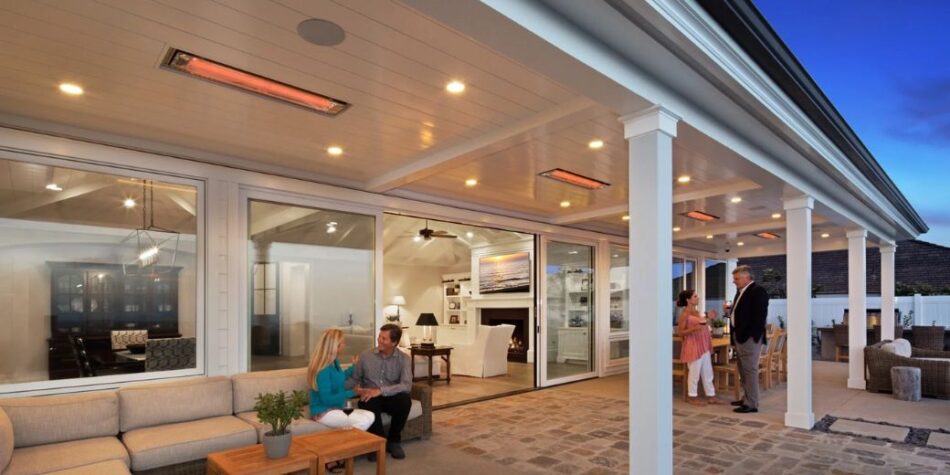Outdoor living spaces have become a central part of modern residential and commercial design. Whether it’s a backyard patio, rooftop lounge, or an open-air restaurant seating area, people are looking to extend their time outdoors — even when temperatures drop. That’s where radiant heaters come into play. But the question remains: Are radiant heaters truly effective for outdoor use?
The short answer is yes. Radiant heaters — particularly those using infrared heater outdoor technology — are among the most efficient and practical solutions for heating open spaces. Unlike traditional convection heaters that warm the air, radiant heaters work by emitting infrared rays that directly heat objects and people. This method of heating mimics the warmth of the sun, providing instant comfort without wasting energy trying to warm the surrounding air, which can quickly dissipate outdoors.
How Radiant Heaters Work
To understand why radiant heaters are ideal for outdoor spaces, it helps to know how they function. Radiant heating systems emit infrared radiation, which travels through the air and warms any solid surface it contacts. This means instead of heating the air (which can be lost to wind or ventilation), radiant heaters warm people, furniture, and flooring directly. This principle makes them particularly effective in open or partially enclosed environments, where traditional heating methods fall short.
Moreover, radiant heaters come in electric or gas-powered options, but electric versions are generally preferred for outdoor use due to their cleaner operation, lower maintenance, and easier installation. They also do not emit greenhouse gases or open flames, making them safer and more environmentally responsible.
Benefits of Using Infrared Heaters Outdoors
Installing an infrared heater outdoor allows property owners to maximize their investment in outdoor spaces. Whether it’s a home patio or a commercial deck, these heaters provide consistent, targeted warmth that extends the usability of an area well into the colder months.
One of the biggest advantages is energy efficiency. Because radiant heaters don’t waste energy heating the air, they consume less power overall. In addition, the heat is almost instantaneous, which reduces the need to run the unit for long periods before people begin to feel the warmth.
Another benefit is the clean, silent operation. Infrared heaters do not use fans or blowers, so there is no noise or movement of dust and allergens — a significant advantage for hospitality settings or those with sensitivities. Plus, the sleek, minimal design of modern models allows for discreet installation, preserving the aesthetic of your outdoor area.
Key Considerations Before Choosing a Radiant Heater
Selecting the right infrared heater outdoor setup involves a few critical considerations. First, assess the size and layout of the space. Radiant heaters work best when they are properly zoned, meaning that multiple units may be needed for large or irregularly shaped areas. Ceiling height, exposure to wind, and the type of materials in your outdoor space (like stone, wood, or metal) will also influence heating effectiveness.
Mounting options are another key factor. Wall-mounted, ceiling-mounted, or flush-mounted systems are available to suit different space requirements and design preferences. Choosing the right placement is essential to ensure optimal coverage and avoid cold spots.
Weather resistance is also crucial. Outdoor heaters need to withstand exposure to elements like moisture, wind, and dust. Most high-quality units are rated for outdoor use and constructed from corrosion-resistant materials such as stainless steel or anodized aluminum.
Safety and Environmental Factors
Radiant heaters have a strong safety profile when properly installed and maintained. Unlike open-flame gas heaters, they pose no risk of tipping over or producing carbon monoxide. This makes them ideal for areas with strict safety regulations or where children and pets may be present.
From an environmental standpoint, electric radiant heaters generate no emissions during operation, making them a greener alternative to fossil fuel-based options. When powered by renewable energy sources, their environmental impact is significantly reduced, aligning with broader sustainability goals.
Commercial and Residential Applications
Radiant heaters are not just limited to residential patios. They are widely used in commercial settings, including restaurants, hotels, event venues, and resort lounges. Businesses often choose radiant heating systems to create a welcoming atmosphere that keeps guests comfortable without significantly increasing operational costs.
For homeowners, radiant heaters offer a way to enhance the livability of outdoor areas, making them usable year-round. Whether it’s hosting a winter barbecue or enjoying a quiet evening under the stars, a well-designed heating system can transform how an outdoor space is experienced.
Conclusion
In conclusion, radiant heaters are an excellent solution for outdoor heating. Their ability to deliver focused, energy-efficient warmth directly to people and surfaces makes them a superior choice for both residential and commercial applications. While there are various options available on the market, the key to getting the most out of your outdoor radiant heating system lies in proper planning and installation.
With the right setup, a radiant heater can turn an otherwise seasonal patio or terrace into a comfortable retreat — no matter the weather. For those looking to invest in lasting comfort, Infratech Heating stands out as both a practical and environmentally responsible option.







